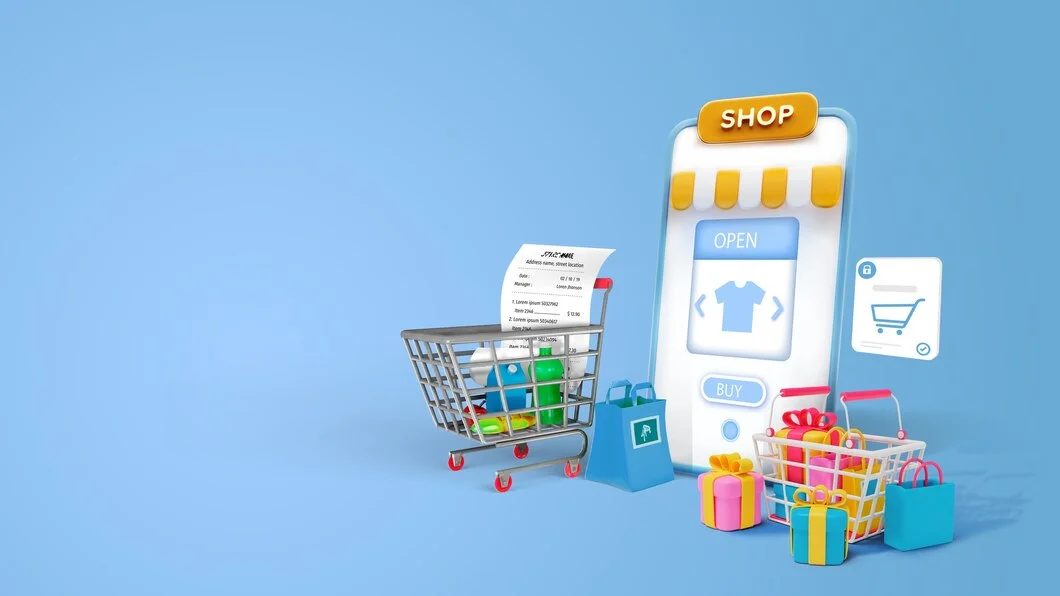Developing an e-commerce web application can vary significantly in cost depending on various factors such as features, complexity, design, development time, and the development team’s hourly rates. However, I can provide a general overview of the cost range and elaborate on what e-commerce is and its advantages.
What is E-commerce?
E-commerce, short for electronic commerce, refers to the buying and selling of goods and services over the internet. It involves online transactions between businesses, consumers, or both, conducted through an electronic platform or website. E-commerce encompasses various types of transactions, including retail sales, digital products, subscription services, and online auctions.

Advantages of Building an E-commerce Application:
- Global Reach: E-commerce allows businesses to reach a global audience and sell products or services to customers anywhere in the world, breaking geographical barriers and expanding market reach.
- 24/7 Availability: Unlike traditional brick-and-mortar stores with limited operating hours, e-commerce websites are accessible 24/7, allowing customers to shop at their convenience, regardless of time zone or location.
- Lower Costs: Setting up and maintaining an e-commerce website is generally more cost-effective than establishing a physical store. E-commerce eliminates expenses associated with rent, utilities, and staffing, resulting in lower overhead costs for businesses.
- Increased Sales and Revenue: E-commerce enables businesses to leverage digital marketing strategies, personalized recommendations, and targeted promotions to attract and engage customers, leading to increased sales and revenue opportunities.
- Improved Customer Experience: E-commerce platforms offer a seamless and convenient shopping experience for customers, with features such as easy navigation, product search, secure payment options, and order tracking, enhancing overall satisfaction and loyalty.
- Data-driven Insights: E-commerce platforms provide valuable insights into customer behavior, purchasing patterns, and product performance through analytics and reporting tools. Businesses can use this data to make informed decisions, optimize marketing strategies, and improve product offerings.
- Scalability and Flexibility: E-commerce platforms are highly scalable, allowing businesses to easily expand product offerings, add new features, and accommodate growing customer demands without significant infrastructure changes.
When developing an e-commerce web application, selecting the right technologies is crucial to ensure scalability, performance, security, and a seamless user experience. Here are some key technologies and components you can consider for building an e-commerce web application:
Frontend Technologies:
- HTML, CSS, JavaScript (ES6+):
- Fundamental building blocks for creating the user interface and styling the application.
- Frameworks and libraries like React, Nextjs, Vue.js, or Angular can be used for building interactive and responsive user interfaces.
- Responsive Design:
- Implement responsive design principles to ensure optimal user experience across various devices and screen sizes.
- CSS Preprocessors:
- Use CSS preprocessors like Sass or Less for efficient styling and code organization.
Backend Technologies:
- Server-side Frameworks:
- Choose a server-side framework for handling business logic, data processing, and API integrations.
- Popular options include ecommerce platform like shopify or woocommerce, or CMS like wordpress or backend techologies like Node.js with Express.js, Django (Python), Laravel (PHP), or Ruby on Rails.
- Database:
- Select a suitable database for storing product information, user data, and transaction records.
- Options include relational databases like PostgreSQL, MySQL, or MariaDB, or NoSQL databases like MongoDB for flexibility and scalability.
- APIs:
- Develop RESTful or GraphQL APIs to facilitate communication between the frontend and backend components.
- APIs can handle operations such as product listing, user authentication, shopping cart management, and order processing.
- Authentication and Authorization:
- Implement secure authentication and authorization mechanisms to protect user accounts, including features like login, registration, password hashing, and session management.
- Consider using OAuth, JWT (JSON Web Tokens), or OpenID Connect for authentication.
Payment Gateway Integration:
- Payment Gateways:
- Integrate payment gateways to enable secure and seamless payment processing.
- Popular payment gateways include Stripe, PayPal, Braintree, Square, and Authorize.Net.
- PCI Compliance:
- Ensure compliance with Payment Card Industry Data Security Standard (PCI DSS) requirements to safeguard sensitive payment information and prevent fraud.
Infrastructure and Deployment:
- Cloud Hosting:
- Host your e-commerce application on cloud platforms like AWS (Amazon Web Services), Google Cloud Platform (GCP), or Microsoft Azure for scalability, reliability, and flexibility.
- Content Delivery Network (CDN):
- Utilize CDNs to deliver static assets, improve page load times, and enhance performance for users worldwide.
- Containerization and Orchestration:
- Use containerization technologies like Docker and container orchestration platforms like Kubernetes for deploying, scaling, and managing application containers efficiently.
- Continuous Integration and Deployment (CI/CD):
- Implement CI/CD pipelines to automate the build, testing, and deployment processes, ensuring rapid and reliable releases.
Cost of Developing an E-commerce Web Application:
- Basic E-commerce Website:
- A simple e-commerce website with essential features like product listings, shopping cart, checkout, and payment integration can cost anywhere from US $5,000 to $20,000.
- Mid-range E-commerce Platform:
- An e-commerce platform with additional features such as user accounts, product reviews, search functionality, inventory management, and order tracking can cost between US $20,000 to $100,000.
- Custom E-commerce Solution:
- A fully customized e-commerce solution tailored to specific business needs, with advanced features like multi-vendor support, subscription services, recommendation engines, and AI integration, can cost upwards of US $100,000, depending on complexity.
In summary, developing an e-commerce application in 2024 enables businesses to capitalize on the growing demand for online shopping, leverage emerging technologies, enhance customer experience, and stay competitive in the digital marketplace. By embracing digital commerce, businesses can future-proof their operations and unlock new opportunities for growth and innovation. With the right features, functionality, and user experience, an e-commerce platform can help businesses increase sales, reach new customers, and thrive in the digital marketplace.


 The Future of AI: How Machine Learning is Transforming Businesses
The Future of AI: How Machine Learning is Transforming Businesses  AI in E-commerce: Enhancing Customer Experience & Engagement
AI in E-commerce: Enhancing Customer Experience & Engagement  How AI-Powered Chatbots Are Revolutionizing Customer Support
How AI-Powered Chatbots Are Revolutionizing Customer Support  The Role of AI in Mobile App Development: Smarter and Faster Apps
The Role of AI in Mobile App Development: Smarter and Faster Apps  How To Choose Top Website Development Company In USA
How To Choose Top Website Development Company In USA 


